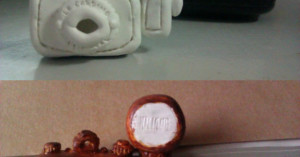
Make a DIY Camera Sculpture Using Oven Bake Clay
For a fun weekend craft, try sculpting your own camera using a chunk of …

For a fun weekend craft, try sculpting your own camera using a chunk of …
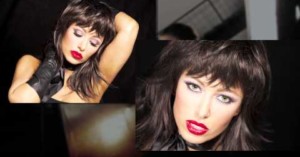
We've shared this same topic here a couple of times before, but Jay P. Morgan of The Slanted Lens created this video lesson showing some examples of how profound of an impact your focal length choice can make.
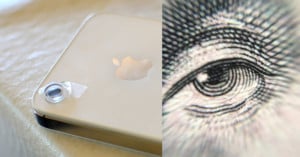
If you want to take Lensbaby-style selective focus macro shots using your phone, go buy a cheap laser pointer. Photographer Zaheer Mohiuddin writes that the lens inside laser pointers (the one that focuses the laser) works well as a macro lens for the tiny cameras found on smartphones. After taking the device apart and finding the small gem-like lens, simply attach it to your camera with some tape to start shooting close-up pictures.

Bruce Davidson is an American photographer who's well known for his photographs of Harlem, New York City decades ago. In the video above, he sits down and talks to Leica about his life and work:
Renowned photojournalist and Magnum photographer Bruce Davidson has been acclaimed for over half a century for his searing images of street gangs, circus performers and the civil rights struggles of the 1960s, all captured with a remarkable directness, truth and power that transcends the concept of style. Here, in his own words, are Bruce Davidson's forthcoming, charming, and revealing insights into who he is, what he's done, and where he's going.
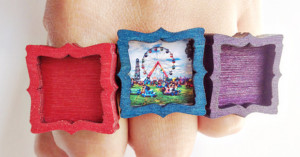
Want to wear your Instagram photographs as jewelry? Instasparkle is a maker of wearable picture frames. They make necklaces, brooches, and rings that hold tiny prints, allowing you to show them off in the real world. The rings, seen above, hold .75x.75-inch prints.
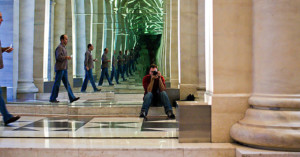
You know the infinitely long tunnel that appears when you look into two mirrors that are pointed at one another? Have you ever noticed that the tunnel becomes more and more green, the deeper you go?
YouTube personality Vsauce has a fascinating new video titled "What Color Is A Mirror?". In it, Mr. Sauce explains that this is due to the fact that there is no such thing as a perfect mirror (i.e. a mirror that perfectly reflects 100% of light). The fact is, a typical mirror best reflects light in the 510nm range, which we perceive as green light.
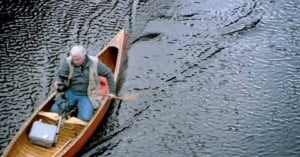
Back in May, we wrote about a photographer named John Butterill and his brilliant idea of using a Internet-connected phone to share his photo adventures with people whose mobility was limited. Google liked Butterill's story so much that they're sharing it as an example of the different things you can do through Google+ Hangouts. The video above is a neat look at how Butterill came up with his idea, and how the concept quickly spread around the world.

While working as a fishing guide in Tofino, British Columbia, Matthew Thornton captured this wild photograph of a humpback whale calf leaping out of the water an extremely short distance away (estimated at 10-30 feet). In his submission to the National Geographic Traveler Photo Contest, Thornton writes,
On our way in from fishing for halibut we noticed a few humpback whales playing in the distance and we stopped part way in to watch. It was quite an experience to see something completely airborne so close to the boat. The lucky thing was I got the photo I submitted. A fellow boat also got a picture of the whale close to mid air and it was also all caught on video. Was an amazing day.
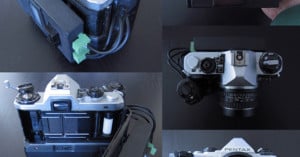
Slit-scan cameras are used to shoot finish line photos due to the fact that recording a moving subject along a strip of film makes it impossible to miss any frames. Engineer and photographer James Guerin was interested in the distinctive look, so he went about building his own slit-scan film camera using an old Pentax SLR.
He ended up with the heavily modified camera seen above: a Pentax ME Super SLR that's equipped with a special winding system that automatically moves film across a narrow slit as the photos are being exposed.
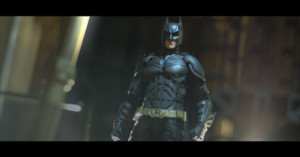
Filmmakers Derek Kwok and Henri Wong of Parabucks created this ridiculously awesome stop-motion short film titled "Batman: Dark Knightfall" using highly-realistic 1/6-scale collectible action figures by Hong Kong toy company Hot Toys. Be sure to turn on HD when you watch it.
The cinematic lighting and sound effects give this film a realism that you'll be hard pressed to find in a stop-motion video -- at times you won't believe that what you're seeing isn't showing real actors.

California-based entomologist Shaun Winterton was browsing Flickr back in May 2011, when he discovered a new species of insect.
That's right: he made a scientific discovery by simply looking at pictures online.
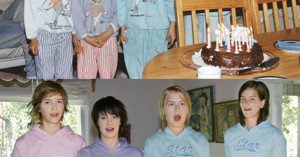
Wanting to see how she and her siblings have changed over the years, Helsinki-based photographer Wilma Hurskainen decided to gather her three sisters together and recreate photographs of the four of them taken by their father decades ago.

The man in the moon and the face on mars. These are both the result of a psychological phenomenon known as pareidolia, which involves the brain trying to perceive random signals as significant. It's one of the brain's face detection mechanisms, and causes us to see faces where they don't actually exist -- the Virgin Mary's face on toast, for example.
Programmer Phil McCarthy decided to play around with the idea of paredoila in artificial intelligence, and created a program called pareidoloop. It uses face detection algorithms to "see" human faces in randomly generated polygons.
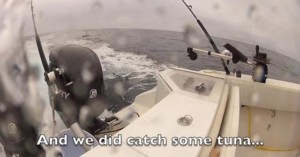
On Monday, a group of four friends went on a fishing trip in the Pacific Ocean. Taking their boat "A Salt Weapon" 20 miles west of Santa Cruz, Mark Peters, Jeremy, Dave, and William were expecting a fun-filled day of albacore tuna hunting. What they ended up capturing was so much more.
Wanting to save some memories of their trip and film their battles with tuna from underwater, Peters decided to bring along a GoPro Hero 2 camera fitted inside a $50 custom-made torpedo.
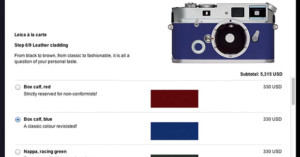
When shopping for a new computer, online shops often allow you to customize the computer and choose the individual components that go into it. If the computing world can offer that, why not the photography world?
Turns out you can with Leica cameras. The company has a website called "Leica à la carte", through which you can configure a film Leica rangefinder to suit your tastes and needs.
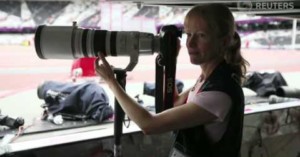
Here's a video that offers a peek into the life of a Reuters photographer covering the Olympics. It features photographers and editors on the Reuters team talking about the joys and challenges of shooting the biggest sporting event in the world.
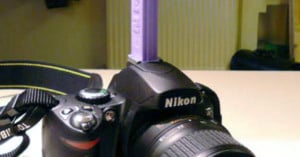
Big bulky cameras can be pretty intimidating when they're used to photograph young children. For a cheap and simple way to make yours a little more child-friendly, consider using a PEZ candy dispenser as a fun, attention-grabbing hotshoe accessory.
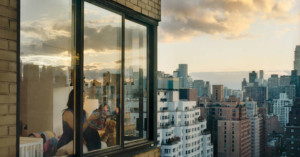
The photographs in photographer Gail Albert Halaban's series Out My Window are unsettling and beautiful at the same time. Each of them shows people framed by open apartment windows in New York City -- quite creepy if the images are actually of unsuspecting strangers. At the same time, the voyeur is quite a photographer, as each shot perfectly balances the lighting of the subject inside with the cityscapes and brick walls outside.
The scenes were actually all staged, and are intended to share something that Halaban says New Yorkers can relate to: "connecting" with neighbors through apartment windows.
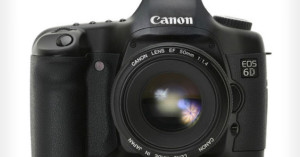
You know the major firmware update that just rolled out for the Canon 7D? The purpose of it might have been to hold Canonites over through a couple months of DSLR-less news. Northlight Images is reporting that Canon will not be unveiling a new DSLR at Photokina, but will instead be waiting until October to unleash a new full frame DSLR on the world.
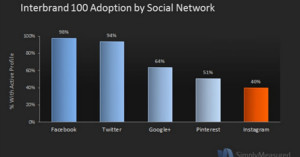
Over the past year, Instagram has been the most talked-about photo sharing service and one of the most talked about social networking services. Logically, more and more brands are joining it and trying to figure out ways to reach potential customers through filtered photos.
Social media analytics company SimplyMeasured published an interesting report earlier this week that explores how popular Instagram currently is among the world's most valuable brands.
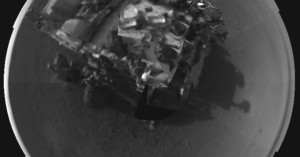
Ever since NASA's Curiosity rover landed on Mars and started beaming back photographs earlier this week, people have been wondering, "why are the photos so bad?" The criticism seems merited: consumers these days are snapping great high-res photographs using phones that cost just hundreds of dollars, yet NASA can't choose a camera with more than 2-megapixels of resolution for their $2.5 billion mission?
In an interview with dpreview, project manager Mike Ravine of Malin Space Science Systems -- the company that provided three of the rover's main cameras -- explains that there were a couple main reasons behind the "lame" cameras: data transfer and fixed specifications.
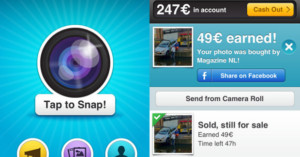
A couple months ago we shared an app called Foap, which allows people who take pictures with their phone to put the images up for sale for $10 a pop. If Foap is the bane of microstock photographers, then Scoopshot is the bane of photojournalists.
It's an app that helps phone photographers easily sell their images to news organizations. After all, when a local story happens, it's often random passersby that are on the scene first with phones out and camera apps loaded.
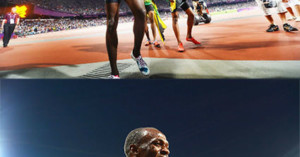
Ever wonder what it's like to be the world's fastest man winning a gold medal at the Olympics? Usain Bolt wants you to know.
After sprinting to victory in the 200m race today, Bolt proceeded to run over to the photographers' pit, commandeer a Nikon DSLR from one of the photographers, and snap super wide angle views of what he was experiencing. The photographer, Jimmy Wixtröm of Aftonbladet (Scandinavia's largest paper), left the event with memories of a lifetime and a memory card containing epic images that are the envy of many a sports photographer.
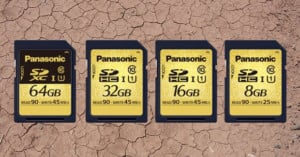
A few days ago we shared the story of a memory card that stayed alive after three years at the bottom of a muddy creek. What's important to note is that the card had the luxury of being protected by the Canon XT it was inside -- a camera that was utterly destroyed during those three years.
What if memory cards could be as durable as the weatherproof cameras that are becoming popular amongst compact camera users? That's what Panasonic is trying to do with its new line of sturdy SD cards.
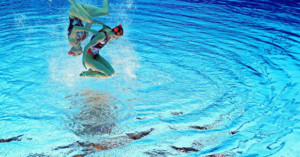
What happens if you take photos of synchronized swimming shot at the Olympics and flip them upside-down? Ethereal beauty, that's what.
The Huffington Post did this experiment yesterday using photographs shot by Getty and AFP photographers. The results are magical.

In Russian art museums, older ladies are hired as guards for the pieces in the collections. Photographer Andy Freeberg noticed that these women were a constant part of the visitors' viewing experience, silently hovering near the artworks as they're being enjoyed. Finding these women "as intriguing to observe as the pieces they watch over", he decided to photograph them alongside the works they're tasked with guarding. The project is titled "Guardians of Russian Art Museums".
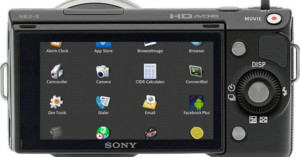
It looks like the digital camera industry is moving quickly towards building mobile operating systems into its products.
Yesterday we reported that a soon-to-arrive Nikon camera will be powered by Android, and today rumors have emerged that Sony will be offering something similar in its NEX line of mirrorless cameras.

If you've been shying away from posting your photographs to Facebook because you don't want them stolen, security software company McAfee has come up with a solution for you. It's a new tool called McAfee Social Protection, and helps you protect your photos using invite lists, blurring, and lock-down.

One of the common reasons given for being wary of photographers is that terrorists commonly use cameras as part of their information gathering tactics prior to devastating attacks.
The disconcerting video above is a terrorist prevention video that was funded by the Department of Homeland security and uploaded to Houston's city website back in January 2011. Starting at 1:42, it attempts to convince people that photographers may be potential terrorists, and that the police should be called if one appears to "hang around for no apparent reason."
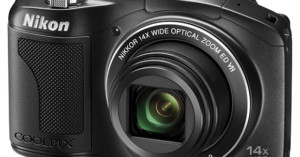
Remember the days when portable electronic devices were mostly all powered by AA and AAA batteries? Consumers had to regularly purchase new batteries to keep their gadgets juiced -- a big sink for your hard earned money. When rechargeable batteries started becoming ubiquitous, they were touted as a feature for saving both time and money. All you had to do was plug your camera into the wall (or your battery into a charger) and a few hours later you were recharged.
Now things are moving back in the other direction. It's more difficult to find a quality AA-powered camera on the market, and it can be difficult for travelers to find a suitable power outlet while overseas. That's why Nikon's new CoolPix L610, freshly announced today, boasts about the fact that it supports AA batteries.